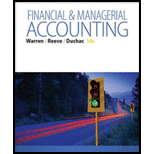
1.
Financial Ratios: Financial ratios are the metrics used to evaluate the liquidity, capabilities, profitability, and overall performance of a company.
The following ratios for five years:
- (a) Rate earned on total assets
- (b) Return on
stockholders’ equity - (c) Times interest earned ratio
- (d) Ratio of total liabilities to stockholders’ equity
1.
Explanation of Solution
Given info: Items of financial statement
a. Rate earned on total assets for five years (2012 to 2016)
Return on assets determines the particular company’s overall earning power. It is determined by dividing sum of net income and interest expense and average total assets.
Formula:
b. Rate earned on stockholders’ equity for five years.
Rate earned on stockholders’ equity is used to determine the relationship between the net income and the average common equity that are invested in the company.
Formula:
c.Number of times interest charges are earned ratio for five years
Number of times interest charges are earned ratio quantifies the number of times the earnings before interest and taxes can pay the interest expense. First, determine the sum of income before income tax and interest expense. Then, divide the sum by interest expense.
Formula:
d. Ratio of liabilities to stockholders’ equity for five years (2012 to 2016)
Ratio of liabilities to stockholders’ equity is determined by dividing liabilities and stockholders’ equity. Liabilities are determined as the difference between ending balance of assets and stockholders’ equity.
Formula:
2.
To prepare: Analysis of graphs
2.
Explanation of Solution
- The return on total assets and return on stockholders’ equity are in increasing trend for the last five years. There is a positive use of leverage. It is evident through the above ratios.
- The ratio of liabilities to stockholders’ equity shows that the proportion of debt to stockholders’ equity is declining over the period.
- The level of debt has been relative to the equity and has improved in the five years.
- The times interest earned ratio is improving when compared to industry average.
Want to see more full solutions like this?
Chapter 15 Solutions
Financial & Managerial Accounting
- I need help finding the accurate solution to this financial accounting problem with valid methods.arrow_forwardWhat was sales revenue for the year?arrow_forwardA regional savings bank negotiates the purchase of a one-year interest rate cap with a cap rate of 3.85 percent with a large financial institution. The option has a notional principal of 2.2 million and costs 3,400. In one year, interest rates are 4.95 percent. The regional savings bank's net profit, ignoring commissions and taxes, was_.arrow_forward
- Can you explain this general accounting question using accurate calculation methods?arrow_forwardI need guidance with this financial accounting problem using the right financial principles.arrow_forwardCan you explain the process for solving this financial accounting problem using valid standards?arrow_forward
